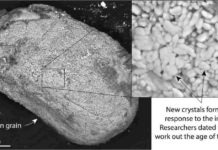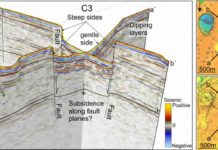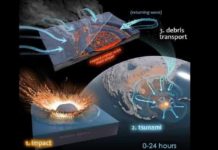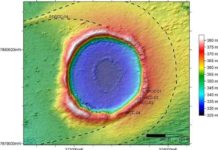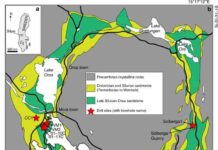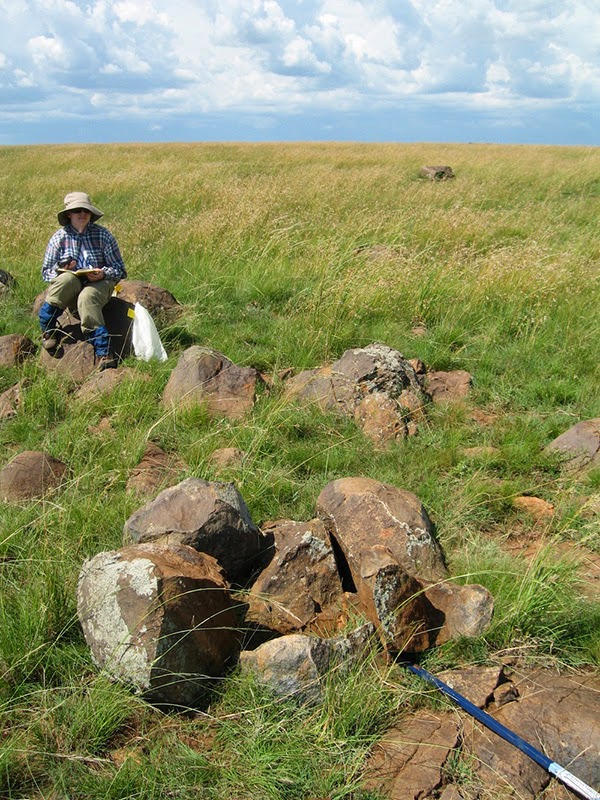
Desmond Moser never gives up. Twenty years ago, the now Western Earth Sciences professor first visited the heart of South Africa’s Vredefort impact crater, locating what he believed to be some of the only remains of a magma sea created more than 2 billion years ago in a 300-kilometre-wide crater.
He published his finding in 1997 in the journal Geology and awaited praise from peers.
But it never came.
“It was the first paper I ever published and people keep following it up by publishing stuff knocking it. I said it looked like impact rock, while everyone else said it wasn’t. But I was still convinced I was right,” said Moser, of what he refers to as the Vredefort Gabbronorite.
In 2009, Moser, along with PhD student Lisa Cupelli, returned to the South African site to see if they could once and for all confirm his original findings.
Scientists place the asteroid that struck Vredefort among the latest ever to hit the Earth, estimating its size at 5-10-km in diameter.
Given the original location was staked out in pre-GPS 1994, the pair had only an old map and a 35mm slide to guide them.
“I told her this is the situation: If we can find more of the stuff, and we can prove it, it’s going to be good news. Or, it could be a total bust,” he said. “There are hundreds, if not thousands, of geologists going to the area all the time, but they are just walking over the stuff.”
After and hour-and-a-half, Moser and Cupelli found the site where he collected his first sample, thanks to the marking of an windmill that still stood nearby in what was now a farmer’s field.
They spent the next two-and-a-half weeks mapping and collecting samples. And the result was just what he expected.
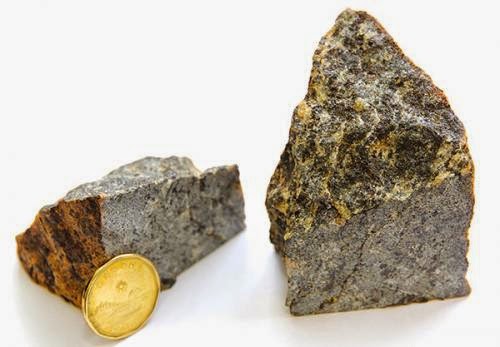
“It is definitely a rock that crystalized from the mini-sea of magma, which was created by the impact crater,” he said.
To this day, detractors still think Moser is mistaken.
“Everyone assumed over the years it (the rock) had simply been worn away. It’s not target impact that I found, but rock that is produced from the heat of the magma ocean and, once crystalized, turns into rock – new impact-created rock.”
One of the reasons Moser said other geologists kept missing the point was it didn’t look like what you expect it to look like, even to Moser.
“I did say no at first. But what people usually don’t look at is the micro-minerals,” he said. “When I brought it back to the lab, most of the rocks I got from there had all these smashed and corrupted crystals. But with this particular one they were gem-quality, beautiful little prisms, crystal clean. And then I dated them and they came out to be the age of the impact.
“Then, I knew I had something.”
Moser’s re-confirmation of his earlier work, published in this month’s Geology, will keep geologists on both sides of the fence or, in this case, both sides of the crater, debating whether or not Moser’s discovery is what he says it is.
“I think there is more to be found. We may be walking over more impact rock, but just not assuming what it is,” he said.
One thing for sure, Moser still has the scientific evidence to prove his 20-year-old point.
“I’m a big believer in the truth, and sometimes it takes that long,” he said. “But science works.”
Note : The above story is based on materials provided by University of Western Ontario




